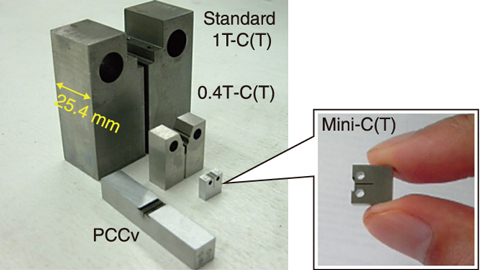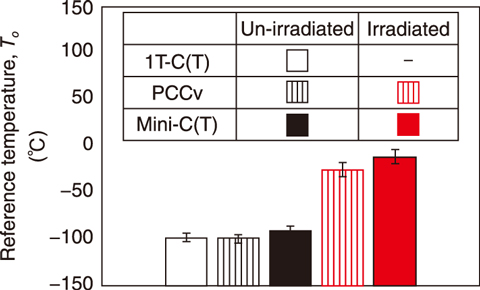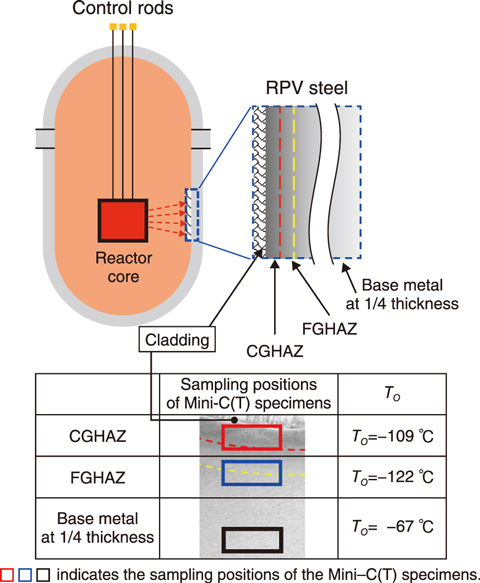
Fig.2-14 Fracture toughness test specimens

Fig.2-15 Fracture toughness test results of un-irradiated and irradiated RPV steels

Fig.2-16 Fracture toughness distribution in the HAZ region under overlay cladding using Mini-C(T)
The reactor pressure vessel (RPV) in nuclear power plants is the most important component for safe operation. The ability of the RPV steel to resist fracture (i.e., the fracture toughness) decreases with neutron irradiation in a process, which is known as irradiation embrittlement. Since stainless steel is weld overlaid (i.e., cladding) on the inner surface of the RPV, a heat-affected zone (HAZ) with an inhomogeneous microstructure is formed under the cladding to a depth of approximately 10 mm. The irradiation embrittlement of this HAZ region, where the irradiation dose is high due to its close proximity to the reactor core, becomes critical for a structural integrity assessment of the RPV. Nevertheless, it is difficult to investigate the fracture toughness distribution of the narrow and inhomogeneous HAZ region using a standard-size specimen. Therefore, specimens with a thickness of 4 mm (i.e., miniature compact-tension specimen (Mini-C(T)), see Fig.2-14) were employed to clarify the fracture toughness distribution of the HAZ.
One of difficulties encountered by employing such small specimens is dependency of fracture toughness on specimen size. As the fracture toughness specimen becomes smaller, the plastic deformation becomes easier due to weak plastic constraint. To prevent plastic deformation and obtain correct fracture toughness, tests must be performed at very low temperatures as possible within the ductile-brittle transition temperature region. However, the valid test temperature range is specified in Japan Electric Association Code 4216 as the test standards, and the test temperature range for Mini-C(T) is considerably narrow. The test temperature for Mini-C(T) was thus carefully adjusted for each test by referring to previously obtained test results using 1T-C(T), allowing valid fracture toughness data required for the reference temperature (To) evaluation to be obtained. The obtained To values equivalent to 1T-C(T) and PCCv for both un-irradiated and neutron-irradiated materials are shown in Fig.2-15. These results indicate that the Mini-C(T) can be used in fracture toughness evaluation without significant specimen size dependence.
A fracture toughness evaluation of the HAZ region under the cladding of un-irradiated RPV steel was then performed using the Mini-C(T). The microstructure of HAZ was changed from coarse-grain (CG) HAZ to fine-grain (FG) HAZ with increasing distance from the cladding. The sampling positions along the Mini-C(T) and evaluated To values are shown in Fig.2-16. The fracture toughness of CGHAZ and FGHAZ could be evaluated individually using the Mini-C(T). Here, lower To corresponds to better fracture toughness. The fracture toughness of HAZ region was changed with increasing distance from the cladding. The fracture toughness of CGHAZ near the cladding was lower than that of FGHAZ, meanwhile, both fracture toughness were better than that of the base metal at 1/4 thickness of a plate, which represents the fracture toughness of RPV steel.
Future work will involve evaluating the fracture toughness of HAZ in neutron-irradiated RPV steel and clarifying the sensitivity of the HAZ region to irradiation embrittlement.
A part of this study was sponsored by the Secretariat of the Nuclear Regulation Authority (NRA), Japan.